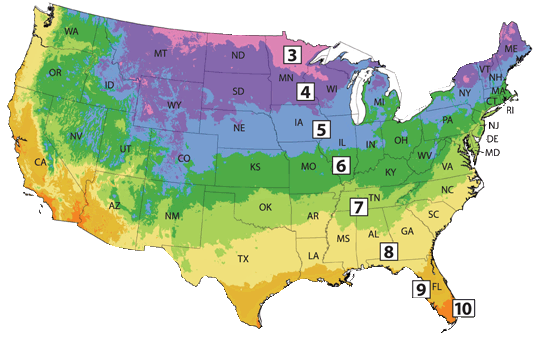
Types of Ficus Plant ‘Fig Trees’ for Sale
Read MoreExplore our collection of Ficus plants, also known as fig trees or weeping figs. Ficus is a versatile plant that is commonly grown indoors and can take many forms, from creeping vines to Ficus bonsai trees. They're known for their beautiful narrow, glossy-green, droopy foliage. While it is finicky, few plants are as flexible as the ficus. At the bottom of the page, discover and learn more about the Ficus care and features in detail.
Ficus Plant Key Features:
Here are some main key features of the Ficus varieties:
- Ficus leaves come in a variety of shapes, sizes, and colors. They can be glossy, leathery, or even variegated, which means they have different shades or patterns on them.
- The stem of a Ficus plant is usually woody and can grow quite thick over time. Some Ficus species have interesting aerial roots that hang down from the branches and can even grow into new plants if they touch the ground!
- Ficus plants actually have tiny flowers, but they're often not very noticeable because they're enclosed within a structure called a fig. While figs are a type of fruit, they are known as "false fruit" or "multiple fruit." Unlike typical fruits that develop from the ovary of a flower, figs are formed from the matured and enlarged receptacle of the flower. It's often eaten by birds and other animals, which helps to spread the plant's seeds.
- Ficus plants can be propagated through stem cuttings or air layering. Stem cuttings involve taking a piece of the stem and rooting it in water or soil to grow a new plant. Air layering is a method where you encourage roots to grow on a branch while it's still attached to the parent plant, and then you can separate it to create a new plant.
- Ficus plants are generally known for their vigorous growth and can quickly become too large for their containers. By repotting every other year, you can help control the plant's size and prevent it from overpowering your living space.
Ficus Tree Care
When it comes to caring for Ficus tree plants, keep the following points in mind:
Quick Reference

Bloom Season

Flower Color

Growth Rate

Hardiness Zone

Mature Size

Plant Type

Sun Exposure

Toxicity

Watering Needs
Watering Needs
When it comes to watering your Ficus plant, it's important to strike a balance. You want to keep the soil evenly moist, but not soggy. Overwatering can lead to root rot. While underwatering can cause the leaves to droop and fall off. Check the top inch of soil, and if it feels dry, give your Ficus a good drink. But if it still feels slightly moist, hold off on watering for a bit. And remember, it's always better to underwater a little than to overwater a lot.
Light Requirements
When it comes to light, Ficus plants are pretty chill. If growing Ficus tree indoors, they prefer bright, indirect light, so placing them near a window where they can get some filtered sunlight is ideal. However, they can also tolerate lower light conditions, so don't worry if your space doesn't get a ton of natural light. If growing outdoors, just avoid exposing them to direct sunlight for long periods, as it can scorch their leaves. So, find a cozy spot with just the right amount of brightness, and your Ficus will thrive.
Optimal Soil & Fertilizer
When it comes to soil, Ficus plants prefer a well-draining potting mix. You can use a mix specifically formulated for indoor plants or create your own by combining equal parts of peat moss, perlite, and vermiculite. This will provide good aeration and drainage for the roots. As for fertilizer, Ficus plants appreciate a balanced (5-10-5), water-soluble NPK fertilizer formulated for houseplants. During the growing season (spring), you can fertilize your Ficus once a year. In the dormant season (fall and winter), you can stop fertilizer. Just be sure to follow the instructions on the fertilizer package, as over-fertilizing can harm the plant. With the right soil and a little bit of plant food, your Ficus will be happy and healthy.
Hardiness Zone & More
When it comes to indoor conditions, Ficus plants are quite adaptable. They can thrive in average room temperatures ranging from 60 to 75°F. As for humidity, they prefer moderate to high levels, so it's a good idea to provide some extra humidity by misting the leaves or placing a tray of water near the plant. If you are living in USDA zones 10-12, you can grow your Ficus plants outdoors year-round in warm temperatures. They prefer temperatures above 55°F and are sensitive to frost, so make sure to bring them back indoors or provide protection when temperatures drop. With the right temperature and humidity, your Ficus will thrive both indoors and outdoors!
Final Thoughts
Overall, the Ficus plant is a fantastic choice for both indoor and outdoor Ficus tree greenery. With its adaptability to various light conditions, preference for well-draining soil, and moderate temperature and humidity requirements, it's a plant that can easily fit into many different environments. Whether you're looking to add some greenery to your living room or create a lush outdoor oasis, the Ficus plant is a versatile option that can thrive with a little love and care. So go ahead, bring home a Ficus plant, and enjoy the beauty and benefits it brings to your space!
Other popular succulent genus types include Sedum,
Echeveria, and Euphorbia.















